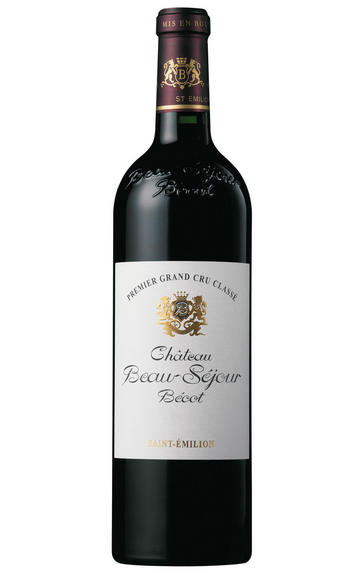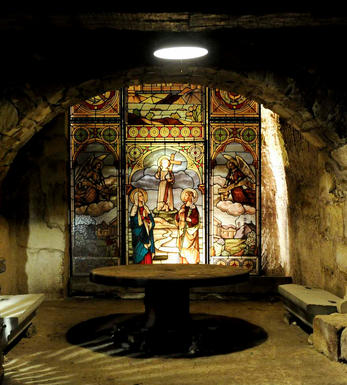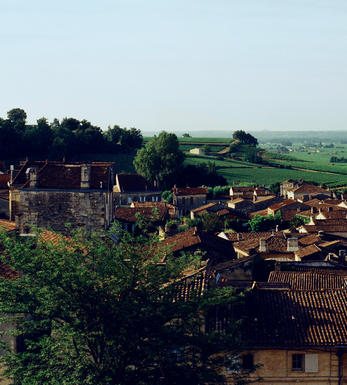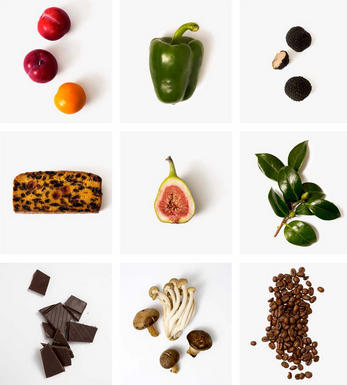
2016 Château Beau-Séjour Bécot, St Emilion, Bordeaux

Critics reviews
The 2016 Beau-Sejour-Becot is a blend of 80% Merlot, 15% Cabernet Franc and 5% Cabernet Sauvignon cropped at 40 hectoliters per hectare, picked between 3-20 October. It has a very pure and precise bouquet, pure with joyful black cherries, blackcurrants, cedar and incense that is beautifully defined. The palate is medium-bodied with supple tannin, very well balanced, sensual and lively with a gentle, caressing finish of cedar and tobacco. There is good structure here, a Saint Emilion that should age with style. This continues the upswing of Beau-Sejour-Becot.
Neal Martin - Wine Advocate #230, April 2017
Deep crimson. Smooth and ripe. No rough edges. Until a sort of dry Marmite finish (love it or hate it). Cool, light end. Rather a lack of fruit intensity on the mid palate.
Jancis Robinson - 13th April 2017
Is this the twin brother of the amazing 2015? We will see. What a superb density and richness with bright and intense tannins that are buttressed with fresh acidity. Beautiful finish.
James Suckling - April 2017
Right on the limestone plateau, this has a lovely delivery of extremely ripe black fruits dotted through with minerality and little pulses of electricity. Extremely successful, this will age well thanks to elongated tannins that are chalky in all the right places. Again, we have this slight austerity on the finish, a reminder than 2016 is not the right bank party we saw in 2015, but this is excellent with such a beautiful balance. Drinking Window 2027 - 2050
Jane Anson - Decanter.com - April 2017
About this WINE

Château Beau-Séjour Bécot
Château Beau-Séjour Bécot has experienced some dramatic ups and downs in recent decades: it was classified a Premier Grand Cru Classé B in 1955, demoted in 1986 and promoted once again, as a Premier Grand Cru Classé B, in 1996.
The terroir is outstanding, most of it atop the limestone plateau. Juliette Bécot and husband Julien Barthe represent the third generation of Juliette’s family here, along with her cousins Pierre and Caroline Bécot. Not so long ago, the wines were turbo-charged and Parker-friendly, ripe with lots of new oak and extraction. Under Juliette and Julien’s guidance, there has been a major turnaround stylistically. Thomas Duclos consults here, having taken over from Michel Rolland.

St Émilion
St Émilion is one of Bordeaux's largest producing appellations, producing more wine than Listrac, Moulis, St Estèphe, Pauillac, St Julien and Margaux put together. St Emilion has been producing wine for longer than the Médoc but its lack of accessibility to Bordeaux's port and market-restricted exports to mainland Europe meant the region initially did not enjoy the commercial success that funded the great châteaux of the Left Bank.
St Émilion itself is the prettiest of Bordeaux's wine towns, perched on top of the steep limestone slopes upon which many of the region's finest vineyards are situated. However, more than half of the appellation's vineyards lie on the plain between the town and the Dordogne River on sandy, alluvial soils with a sprinkling of gravel.
Further diversity is added by a small, complex gravel bed to the north-east of the region on the border with Pomerol. Atypically for St Émilion, this allows Cabernet Franc and, to a lesser extent, Cabernet Sauvignon to prosper and defines the personality of the great wines such as Ch. Cheval Blanc.
In the early 1990s there was an explosion of experimentation and evolution, leading to the rise of the garagistes, producers of deeply-concentrated wines made in very small quantities and offered at high prices. The appellation is also surrounded by four satellite appellations, Montagne, Lussac, Puisseguin and St. Georges, which enjoy a family similarity but not the complexity of the best wines.
St Émilion was first officially classified in 1954, and is the most meritocratic classification system in Bordeaux, as it is regularly amended. The most recent revision of the classification was in 2012

Merlot
The most widely planted grape in Bordeaux and a grape that has been on a relentless expansion drive throughout the world in the last decade. Merlot is adaptable to most soils and is relatively simple to cultivate. It is a vigorous naturally high yielding grape that requires savage pruning - over-cropped Merlot-based wines are dilute and bland. It is also vital to pick at optimum ripeness as Merlot can quickly lose its varietal characteristics if harvested overripe.
In St.Emilion and Pomerol it withstands the moist clay rich soils far better than Cabernet grapes, and at it best produces opulently rich, plummy clarets with succulent fruitcake-like nuances. Le Pin, Pétrus and Clinet are examples of hedonistically rich Merlot wines at their very best. It also plays a key supporting role in filling out the middle palate of the Cabernet-dominated wines of the Médoc and Graves.
Merlot is now grown in virtually all wine growing countries and is particularly successful in California, Chile and Northern Italy.


Buying options
Add to wishlist
Description
This has an aromatic nose with notes of blackcurrant. It’s full-bodied with a spicy, suave texture which leaves a long, bold, persistent finish.
Blend: Merlot 90%, Cabernet Franc 10%
wine at a glance
Delivery and quality guarantee